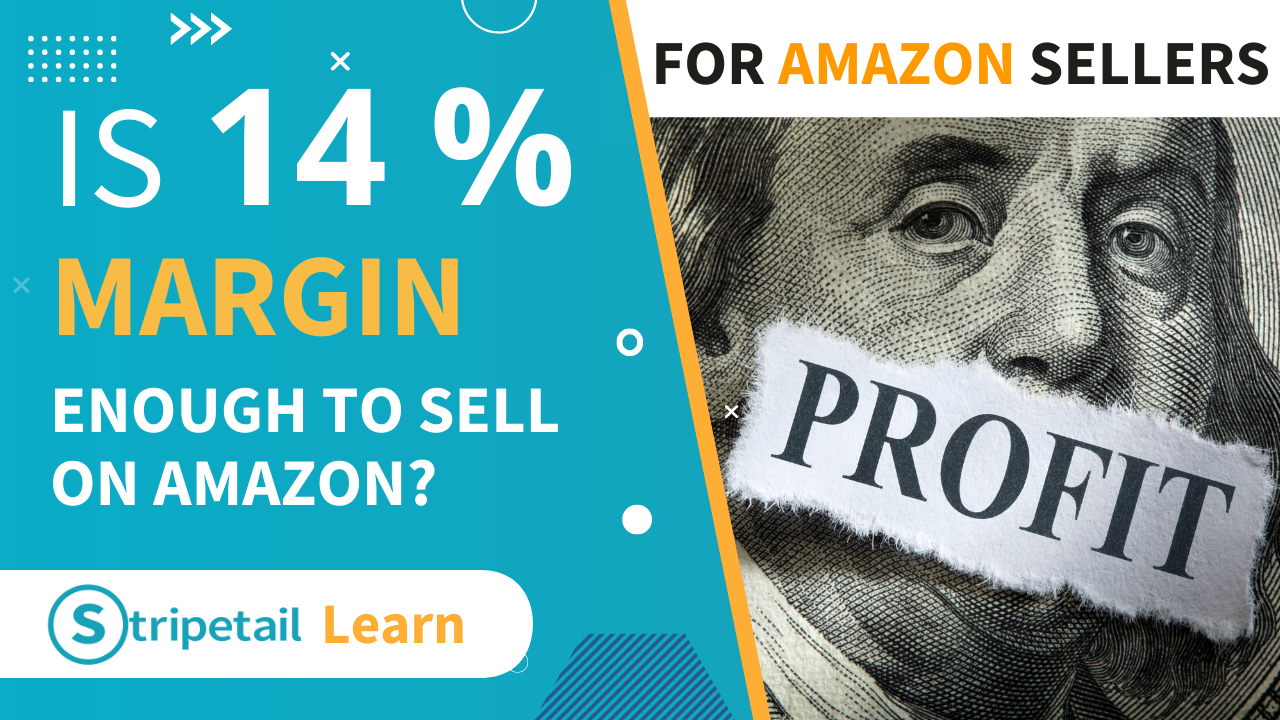

Many factors that would impact your conclusion. Here are things you need to consider

This question goes through your head regardless of your
experience with Amazon. What is the good margin for wholesale/arbitrage or
private label when selling on 3rd party platforms. We asked a few of
our subscribers that have been in business for several years and here is a
summary below:
Is 14% margin enough for an Amazon Seller?
Yes, and no! How about this for an answer… kinda lame, isn’t it…
however, it is true.
Why yes and no? When 14% might be acceptable and when it
seems low?
Every seller's situation is different, and there are many
factors that would impact your conclusion. Here are a few things you need to
consider:
1)
What is your customer return rate?
Historically, sellers experience 3-5% returns on regular products (I am
sure there are some that doing better or worse). So, considering 5%+ returns,
your 14% margin drops significantly.
2)
What is your inventory turnover ratio?
How many times can you “purchase-sell” inventory per year (assuming your reinvesting your cash)? If you can purchase your products and sell through amazon within 2 months, and repeat this throughout the year, this makes your inventory turnover for that item 6 times for this product. So, if you start with $100, and make $14 every 2 months, that would total to $14 x 6 = $94… Is making $94 profit on $100 investment bad?
3) What is your competition vs. margin vs. price behavior?
If you drop your prices (to beat your listing competitors) and sell 10 per day for $10 and make $1.4 (14%) per unit ($14 daily). Alternatively, you can increase your price to $12, share buybox and sell 5 items per day making $2.8 (28%) per unit ($14 daily). Which one makes more sense to you? Sell 10 items and make $14, or sell 5 items and make $14? Again, it is your judgement call, however, many seller would sell 5 and make $14 since your don’t have to replenish your stock as often, pack it and ship it.
4) What is your risk vs return?
Although it is more complicated than this, but in short, what is your initial investment vs your profit. Some folks use ROI formula (ROI=profit /
initial investment). So, if you purchase your product for $30 and it is sold
on Amazon for $100 (assuming high FBA, referral fees) where you make $14 in
profits (i.e. 14% margin), your ROI is $14 / $30 = 46%. Not bad at all.
5)
What is your overhead (OH)?
If you need to pay Amazon membership fees, warehouse, salaries for assistance, packing fees that exceed your 14% then it might be not enough, but if you operate out of your garage, and pack yourself and doing most of analysis or use automated tools, then 14% may be good.
6) What is alternative?
Do you have any other opportunities that will generate higher returns on your investments?
In conclusion, we did not get a ‘one-for-all’ response. Some
sellers operate at lower margins than 14% and some sellers strive to get to
20%. One thing that all sellers have in common – you need to understand your
numbers on every ASIN, profit margin, price behavior, inventory position. Unfortunately,
standard tools that come with seller central are not enough, and you need basic
analytical tools to understand more. -- Click here to learn about sales analytics tools --
Loading manual spreadsheets is a pain, and I am not happy
with off-the-shelf solutions... My sales are growing, and I want to connect to
the Amazon API and do things my own way. Why should I think twice about moving
forward?